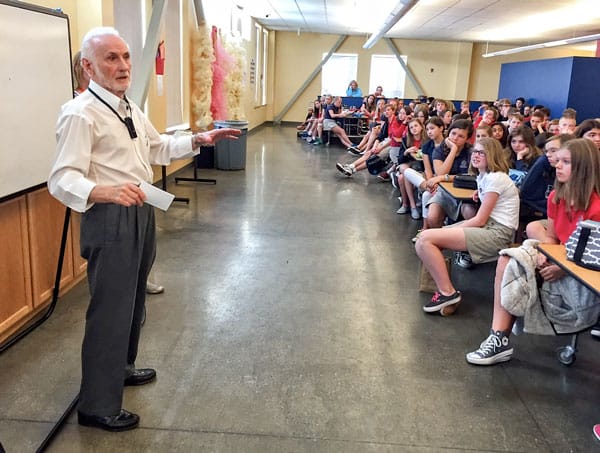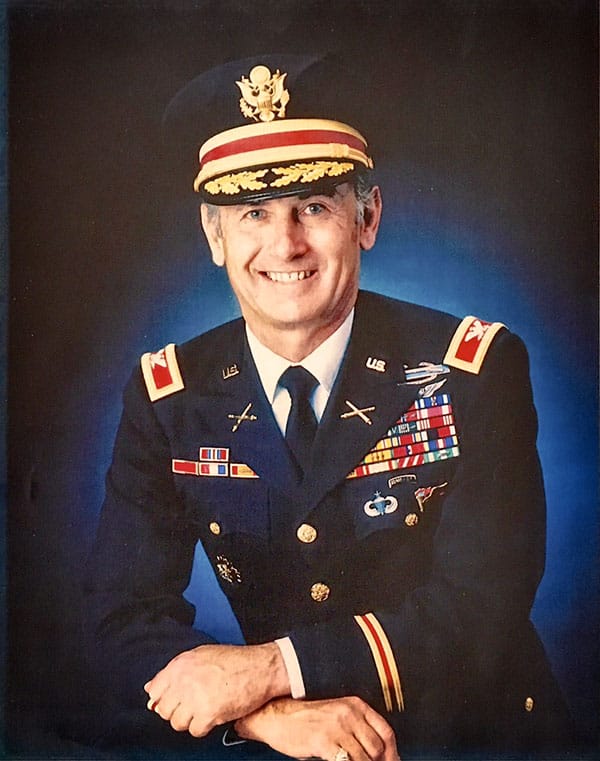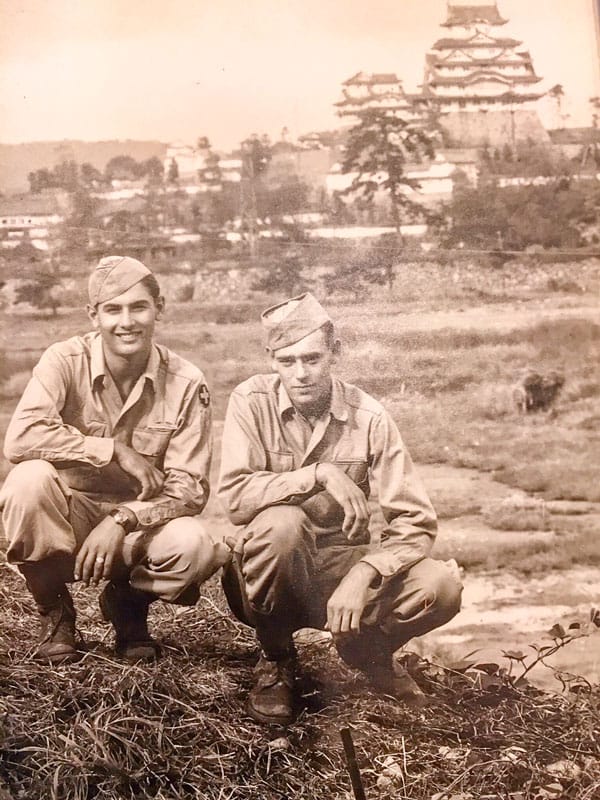World War II veteran brings military history to Castle Pines youth

Retired Army Colonel Larry Caid entertained and educated American Academy students at the Castle Pines campus in April.
Article and photo by Joe Gschwendtner; photos courtesy of Brian Caid
Castle Pines Village resident Brian Caid is a self-proclaimed “army brat”, as are five other siblings born of career soldier Larry Caid and his wife Linda. What makes Brian’s lineage special is that Larry rose from an infantry private in World War II, serving his country for 30 years and retiring as a field artillery colonel in 1974.
Last month, 90-year-old Caid visited American Academy, sharing his experiences from World War II and his remarkable military career. Caid is of the “greatest generation” having grown up in the Great Depression and having fought in World War II because it was the right thing to do.
Leaving modest beginnings in Detroit, World War II drew Caid into its maw in September 1944. A light machine gun specialist with the 33rd Infantry Division, Caid arrived in the Philippines in February 1945, fighting in the Battle of Luzon and liberation of the Islands. The division’s next assignment was to invade Japan’s Honshu Island. The atomic bomb did as intended; his landing on Honshu became an occupation and not an invasion force.
In 1946, Caid’s division was deactivated and he transferred to the 11th Airborne Division where he received paratrooper training. Identified as a future leader, he was then sent to officer candidate school, subsequently being commissioned a second lieutenant of field artillery in 1948. Thereafter, he joined the Army’s 1st Infantry Division (“Big Red One”) stationed in Nuremberg, Germany as a German occupation force until 1953. Though willing, the army declined to ship Caid to Korea.
Returning stateside in 1953, Caid took ranger training at Ft. Benning and was assigned to the 82nd Airborne Division. Later assignments took him to Ft. Bliss, Texas and then peacetime Korea in the late 50s. By this time, he was among the “five percenters” (the army’s best and brightest) and put on a career track. For the next 15 years, Caid was a soldier-academic, attending advanced military schooling, Bucknell University where he taught, Ohio State for his Ph.D., and on to the Pentagon Joint Chiefs of Staff office.
Colonel Caid in Albuquerque, NM in 1977.
There, Lieutenant Colonel Caid volunteered for Vietnam, accompanying the 101st Airborne Division’s transfer overseas. Soon Caid became battalion commander of the 2/319 (105mm howitzer) Battalion. On return to the states, he attended the National War College at Ft. McNair. His subsequent promotion to colonel was contingent on another Vietnam tour ,which he accepted. As Colonel Caid now, he became the 101st Airborne Division artillery commander. His retirement assignment was to Ft. Sill, Oklahoma and he exited the Army in 1974.
Caid is frank; he enjoyed military life immensely. From the mud of the Philippines to battalion command and later, the highest echelons of Pentagon staff, he was a professional soldier through and through. That Linda was always a partner in strategic decisions made all the difference, he said.
Has any of this rubbed off? You be the judge. Caid’s two granddaughters Mariah and Melissa will graduate in May from West Point …